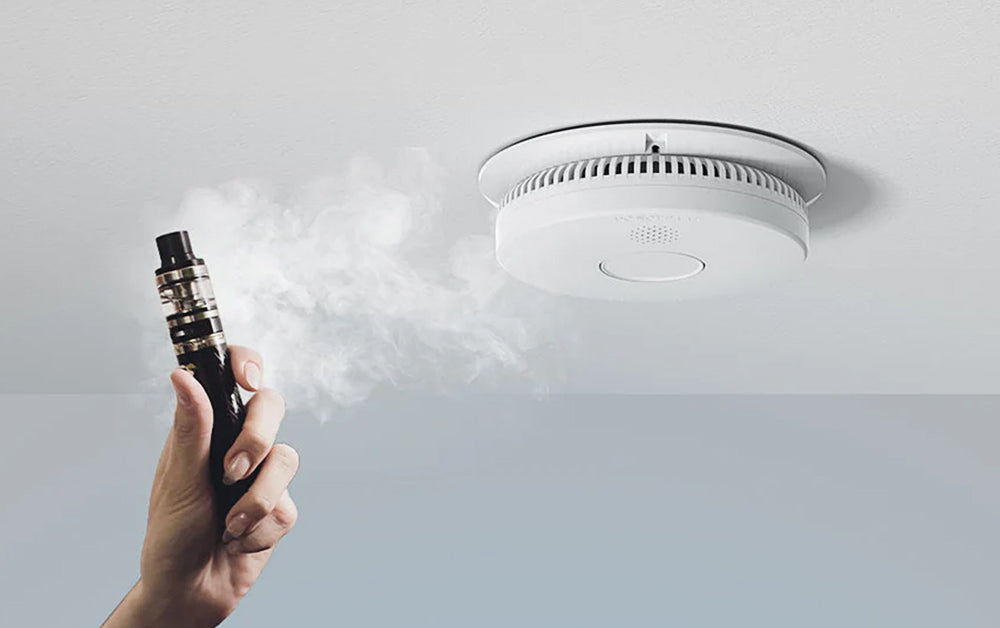Smoke alarms are essential for home safety, serving as the first line of defense against fire hazards. Traditional alarms alert us with loud beeping sounds—but in high-stress situations, especially during the night, that alone may not be enough. Many people, including children, older adults, and deep sleepers, may not wake up—or fully understand the danger—just from a high-pitched beeping noise.
That's where voice-enabled smoke alarms come in. These advanced devices don't just beep—they speak. With clear verbal warnings, they tell you exactly what's happening and where, helping families respond faster and more effectively.
Why Traditional Smoke Alarms May Not Be Enough
Traditional smoke alarms have been a staple of home fire safety for decades, acting as an early warning system by blasting a loud, high-pitched alarm when smoke is detected. Their goal is simple: wake people up or grab attention so they can react quickly. And while they've saved countless lives, these alarms also have some serious limitations that could make them less reliable in certain emergencies.
1. They Don't Tell You What's Happening
One major drawback of traditional smoke alarms is that they only make noise—they don't provide any context about where the danger is or how serious it might be. When an alarm goes off, you know there's smoke, but you're left wondering, "Is it a small kitchen mishap, or is the whole house at risk?"
This lack of specific information can be especially dangerous in larger homes or multi-room spaces, where figuring out exactly where the smoke is coming from takes precious time—and in a fire, every second counts.
2. Not Everyone Wakes Up to Beeping Sounds
Another big issue is that not everyone responds to traditional alarms, especially when they're asleep. Deep sleepers, young children, and individuals with hearing impairments may sleep right through the loud beeping, making these alarms far less effective for them.
Research shows that many children simply don't wake up to high-frequency alarms, which means they could remain unaware of the danger until it's too late. Similarly, for elderly individuals or those with partial hearing loss, the standard beeping sound might not be loud or distinct enough to be noticed in time. And if a fire breaks out in the middle of the night, an alarm that fails to wake people up could lead to a life-threatening situation.
The Advantages of Voice Alerts in Smoke Alarms
1. Instant & Clear Warnings
One of the biggest advantages of voice alert smoke alarms is that they don't just make noise—they tell you exactly what's happening in an emergency. Unlike traditional alarms that rely on loud, repetitive beeping, these smart detectors provide clear, spoken warnings that let you know both the type of danger and where it's coming from.
Instead of waking up confused, wondering where the alarm is going off, you'll hear:
- “Smoke detected in the kitchen.”
- “Fire detected in the bedroom.”
This straightforward, location-specific alert helps you assess the situation instantly, figure out the best course of action, and react quickly, reducing confusion and saving precious seconds when every moment counts.
2. Faster Responses in High-Stress Moments
When a fire breaks out, panic and confusion can slow down reaction times, making it harder to think clearly and act fast. Traditional alarms rely on loud beeping, which can be disorienting, especially when you're groggy or in a rush to figure out what's going on. Voice alerts change the game by giving clear, spoken instructions, telling you exactly what's happening and where, so you can respond immediately instead of wasting precious seconds trying to interpret an ambiguous alarm sound.
This feature is especially useful in larger homes, where a fire might start in one part of the house while residents are in another. Instead of running from room to room searching for the source, a voice alert tells you straight up where the danger is, whether it's the kitchen, bedroom, or basement. No guesswork, just fast, informed action that helps ensure a safer escape.
3. Multi-Language Support
Many voice alert smoke alarms support multiple languages, making them a great fit for multilingual households. If English isn't the first language for everyone in your home, a bilingual voice alarm helps ensure that all family members clearly understand the warning message, reducing confusion and making it easier to respond quickly in an emergency.
4. More Inclusive for Every Household
Smoke alarms with voice alerts are designed to be effective for a much wider range of people. They provide improved protection for a broader population:
- Young children: More likely to wake up to a parent-like voice than to a beep.
- Elderly individuals: Clearer instructions help them react faster.
- People with partial hearing loss: Often respond better to spoken alerts.
Additionally, modern voice alert systems allow users to adjust volume levels and speech speed, ensuring that warnings are easily understood by all members of the household.
Conclusion
Voice alert smoke alarms offer a smarter, more responsive way to protect your home and loved ones. Unlike traditional alarms, they provide precise, location-based warnings that help families react quickly and effectively during an emergency. Whether it's waking children, aiding seniors, or supporting multilingual households, voice alerts enhance safety for everyone.
Investing in voice alert smoke alarms means investing in faster responses, clearer communication, and ultimately, safer outcomes for everyone in the home.



